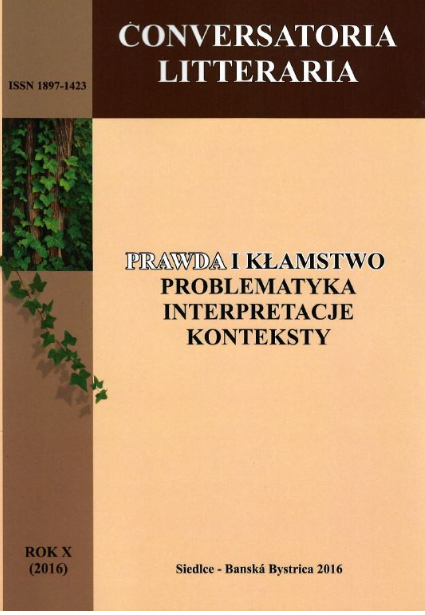MYTOLOGICKÉ ASPEKTY KLAMSTVA A PRAVDY V SLOVENSKEJ ĽUDOVEJ A AUTORSKEJ ROZPRÁVKE
Słowa kluczowe:
artistic fairytale, myth and fairytale, motifs of Truth and Lie, the character of “Liar“Abstrakt
In the study the author focuses on the legacy of folktales as represented in a wide scope of traditional and „artistic folktales“ originally aimed at children listeners/readers. In the texts by Pavol Dobsinsky and Samuel Czambel, the author attempted to identify the parallel ideas and also mythological-fairytale parallels related to the themes of selected fairytales and rich in the motifs of truth, justice and also lies and injustice. Characterwise, attention has also been paid to linguistic and stylistic means. Further attention has been paid to pre-set functions of characters in fantasy, heroic and family-social fairytales; the author compared them with more realistic fairytales which often reflect social-economic phenomena as well as attitudes to lies and truth. When characterising the phenomenon of Truth, the author gravely relied on the basic ethical principles of fairytales and these were applied on the well-known fairytale Či jesto pravda na svete (Is there any Truth in the world?) which later served as a prototext for an artistic poetic prose of Milan Rufus. The poet affirmatively processes the prototext, creatively using ethical and humane ideas. Other analysed texts include a modern parodic and nonsense artistic fairytale entitled Rozprávky uja Klobásu (Mr. Saussage‘s Fairytales) by Julius Satinsky, where Lie is a predominant narrator´s standpoint in order to purposely mystify the reader.




